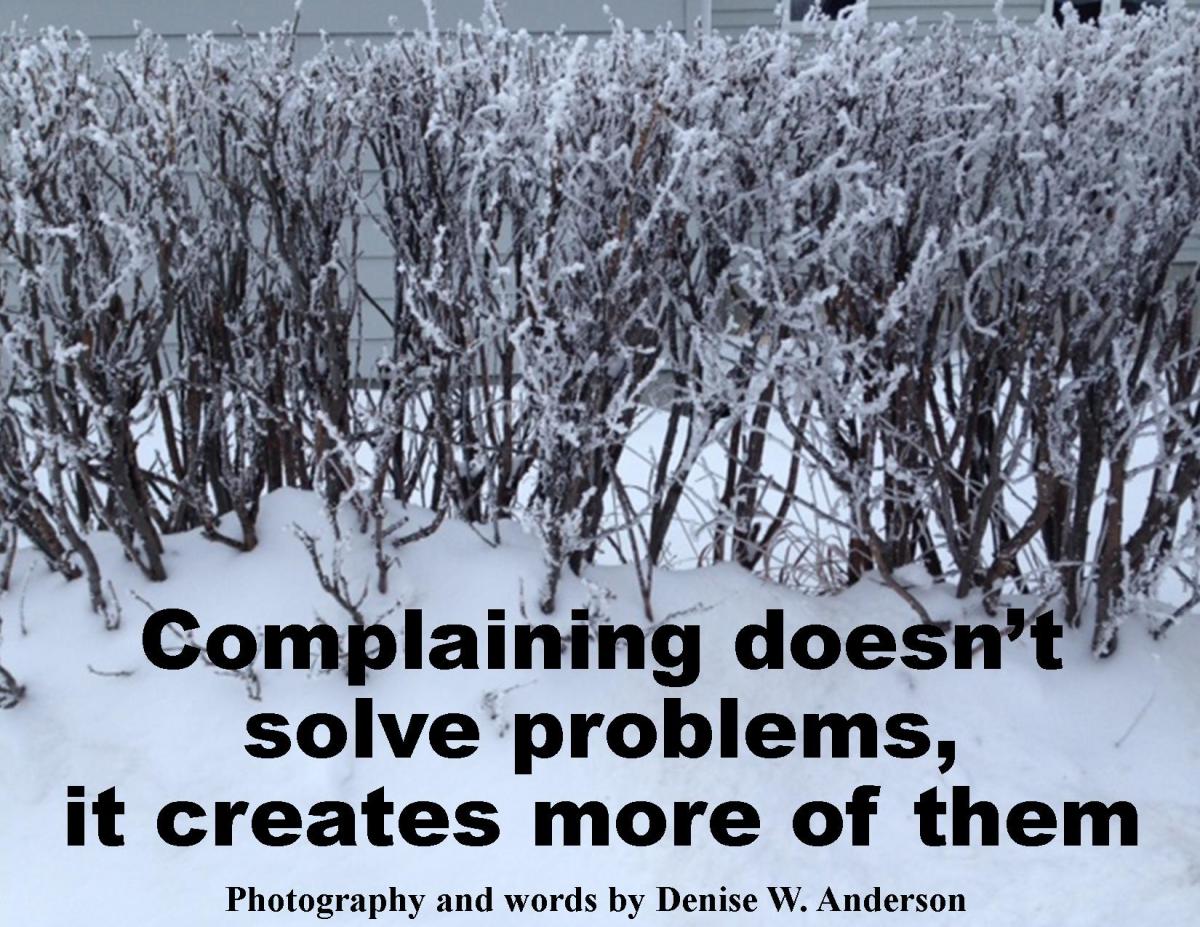- HubPages»
- Health»
- Mental Health»
- Emotions
How Excitement Can Easily Turn Into Worry and Anxiety

Excitement is Fun!
Yeah! We are going to Grandma's house! As children, we used to jump up and down when we heard the news, whether going to Grandma's, or just down the street for an ice cream cone, we looked forward to the event with great anticipation!
Excitement is one of the most positive of emotions. We feel exuberant and ecstatic! Our hearts beat wildly as we think about the good things that will happen when the event occurs. We talk about it, think about it, and dream about it. We pack our bags and wait at the door until it is time to leave.
Then our parents look at us and say, "Whoa! Wait a minute, it is not time yet! We won't be leaving until next week!" Our excitement quickly turns to worry, and we sulk back to our rooms, afraid that something will happen, and we won't be able to go. Why did they tell us we were going if it wasn't even time!
Excitement Becomes Worry
We have all learned that we have to be careful not to "let the cat out of the bag" before the right time. Children live very much in the moment and if we tell them we are going, we had better be going, and soon!
Waiting until it is time to get ready keeps them from the roller coaster of excitement followed by worry. As adults, we are much more cognizant of timelines, schedules, and plans. We are able to set aside our excitement for a time, and go about our daily activities while waiting for the time to pass.
This ability to set limits on our excitement and bring it under containment is the key to keeping normalcy in our lives. We are able to keep worry at a minimum because we know how to set limits. Unfortunately, this system of checks and balances can malfunction. It may be missing altogether or has ceased to work properly.
When this happens, we are unable to set anticipatory thoughts aside. Rather, they run amok, like a herd of wild elephants. Our excitement turns into worry and its attendant physical symptoms. We end up with anxiety, unable to turn off our thoughts. The chart below shows how the physical manifestations of excitement evolve into the negative symptoms of anxiety.
Excitement Becomes Anxiety
Excitement
| Anxiety
|
|---|---|
The heart beats faster, with blood flowing more rapidly
| Sweating, pain/tightness in the chest
|
Rapid, shallow breathing
| Lightheadedness, headaches, and dizziness
|
Increased digestive juices
| Rumbling, nausea, and cramping
|
Parastaltic action in the intestines
| Diarrhea
|
Increased nerve activity in the muscles and skin
| Itching, irritation, and exzema
|
Racing thoughts
| Hyper awareness
|
Watch for Distorted Thinking Patterns
In order to keep this from happening, we have to recognize the distorted thinking patterns that are part of the problem. They include:
- What if questions - asking "what if" certain things will happen.
- Assumptions - making decisions based on information that we do not know is true or accurate.
- Unrealistic expectations - building our hopes so high that they are sure not to be realized.
- Jumping to conclusions - thinking that we know what will happen based on our own knowledge and experience.
The paragraphs that follow talk about these thinking patterns and what we can do to counteract them.

"What If" Questions
"What if" questions often bring out our deepest fears, including abandonment, rejection, ill health, and death. We ask these types of questions because we do not know what is in the future. Life is unpredictable and we are unable to see past the current moment.
This inability to see into the unknown brings with it a plethora of possibilities, most of which will not likely happen. When we think about them, however; we increase their likelihood in our own minds and bring them closer to our field of vision.
Realizing this, the best way to combat these thoughts is to use the following techniques:
- Thought stopping - simply shout "STOP" in your mind or picture a stop sign.
- Visualization - visual the worst thing that could happen. Then think about what the results would be and how to handle it.
- Distraction - put on some lively music and do something physically active.
As we deal with these thoughts, we grow in our understanding of how and why they are distorted, and we are able to recognize what we can do to set limits on them. Once we do, our power over them is increased and they are less likely to affect our emotions.
Assumptions
When we assume, we make decisions based on information that we have not yet checked out for accuracy and truth. This often happens when we think we know why someone has done a particular thing. We go forward, thinking that we know their reasoning, motives, and beliefs.
For example, we receive a phone call from someone and they do not leave a message. We might assume that they do not like us, or that they do not want to talk to us. In reality, perhaps they received another call right when they were planning to leave the message, and they were unable to do so.
The danger with assumptions is that we are usually wrong. We do not know what others are experiencing, thinking, or feeling. We cannot see their thought processes and what has happened for them to make the decisions that they do.
Making assumptions is basically "mind reading." It is putting ourselves on dangerous ground that has no foundation. Our relationships will definitely be "on the rocks" if we engage in this practice regularly. To stop making assumptions, we have to question the information that we are using to make our decisions. If it comes from what we "think" others are "thinking" or "feeling," we are making assumptions.

Unrealistic Expectations
Unrealistic expectations are things that we desire to have happen, and in our desire, we picture them to be bigger than they are in actuality. As we do so, we get our hopes up, and expect certain things to happen, when in reality, they most likely will not come to pass.
Using the example mentioned previously of going to Grandma's house. Children may think that upon arrival, they will be welcomed with open arms, good food, gifts, a comfortable bed, and plenty of love. In reality, Grandma may be aging, has stopped baking, cannot afford gifts, and needs assistance with a major housecleaning project!
Children who have not been prepared adequately for these realities may be keenly disappointed and think that Grandma no longer loves them. Parents must be very careful to be aware of the things their children are thinking and feeling in comparison to reality. Talking through what is happening ahead of time will help to keep unrealistic expectations at a minimum.
As adults, increasing our awareness of what is happening in the lives of those around us, and vocalizing what we see, helps us to work together with our immediate and extended families to keep expectations within the realistic realm. Otherwise, we end up being disappointed in one another rather than rejoicing in our kinship and developing much needed camaraderie.
Which thought processes do you engage in most?
Jumping to Conclusions
Children are notorious for jumping to conclusions. Not having the cognitive skills to understand "if this, then that," they miss important information. As adults, sometimes we even find ourselves doing this very thing. The danger with jumping to conclusions is that we think we have all the cards in the deck to make a move, but in reality, we do not. We make a move prematurely, and end up being embarrassed, put on the spot, or even frustrated and upset.
Taking time to slow down, making lists, checking them twice, and walking through what will happen when it is time to go gives us a chance to make sure that we have everything that we need. It is far better to pack and re-pack than arrive without important items needed!
Unfortunately, this pre-occupation with preparation is a big part of anxiety. We want so much to have everything perfect, that we over prepare. Once we have checked and re-checked, we need to let go of the preparation and do something else to pass the time. We can read a good book, listen to some music, or play a game. Doing so distracts our worrisome thoughts and allows us to relax while we wait.

Keep Anxiety at a Minimum
Because excitement often leads to worry and anxiety, it is important to recognize when we are anticipating the future. One way to tell is to focus on the present. We can ask ourselves the following questions:
- Am I unhappy with the present?
- Is there something happening currently that I want to change?
- Are there people in my life that do things regularly that annoy or upset me?
If the answer to any of these questions is "yes," we are in danger of living in the future rather than the present. We feed our anxiety by making plans for a future that has not yet arrived. While it is important to prepare for our future, living in the future and making decisions based on it is a strong symptom of irrational thoughts and beliefs.
It may be necessary to have some assistance in re-establishing ourselves in the present, setting limits on our thoughts, feelings, and actions, and keeping the future in proper perspective. Anxiety and its attendant physical symptoms wreak havoc on our relationships with our immediate and extended family.
When we take the time to set limits on our excitement of future events, we are also strengthening our ability to set limits on our worry. Doing so keeps anxiety manageable and gives us the ability to see our present with a greater degree of acceptance. Choose today to set limits on anticipation.
This content is accurate and true to the best of the author’s knowledge and is not meant to substitute for formal and individualized advice from a qualified professional.
© 2014 Denise W Anderson








